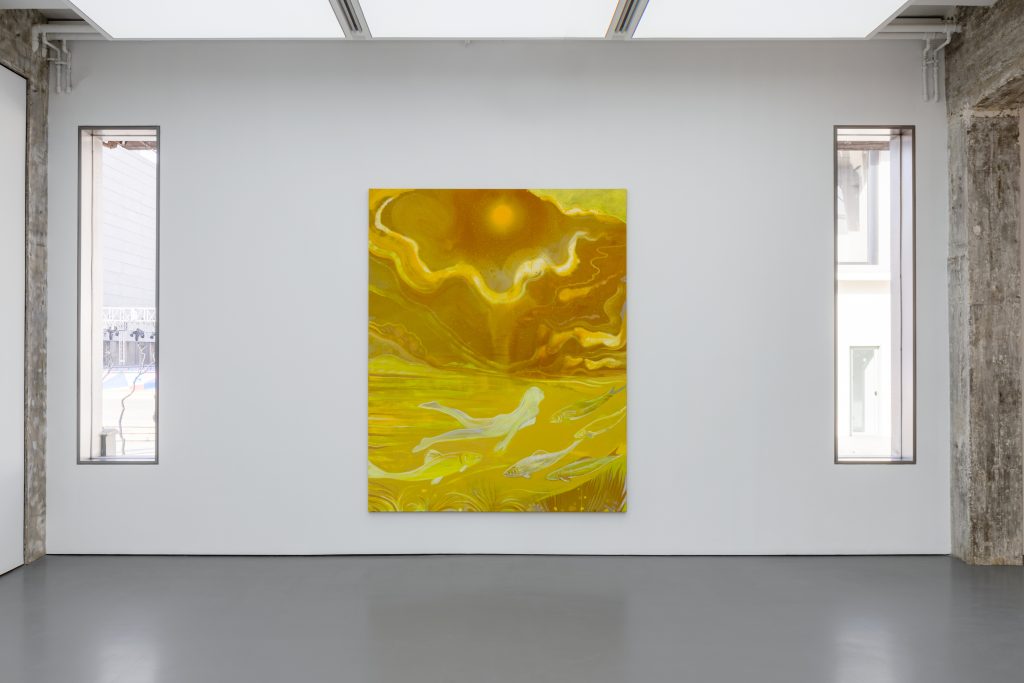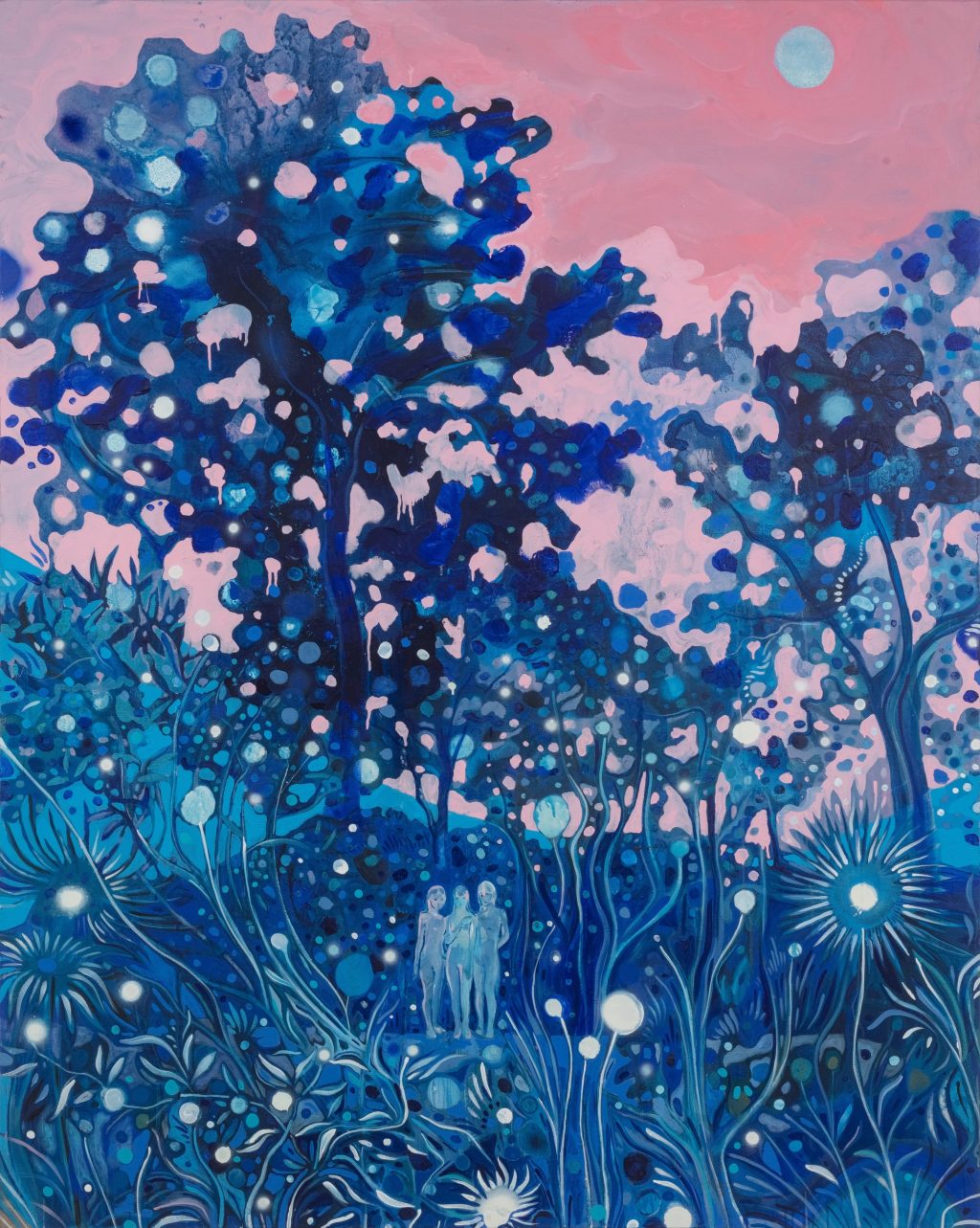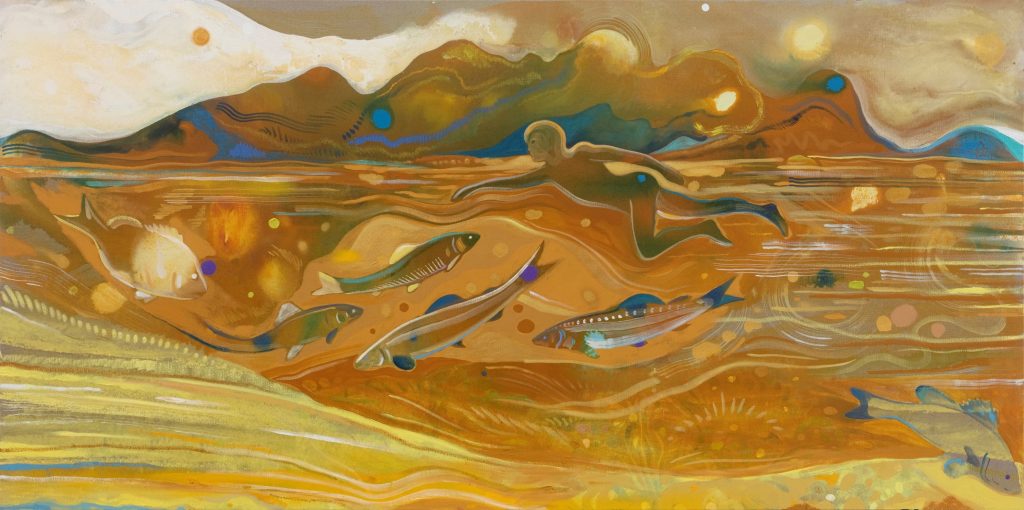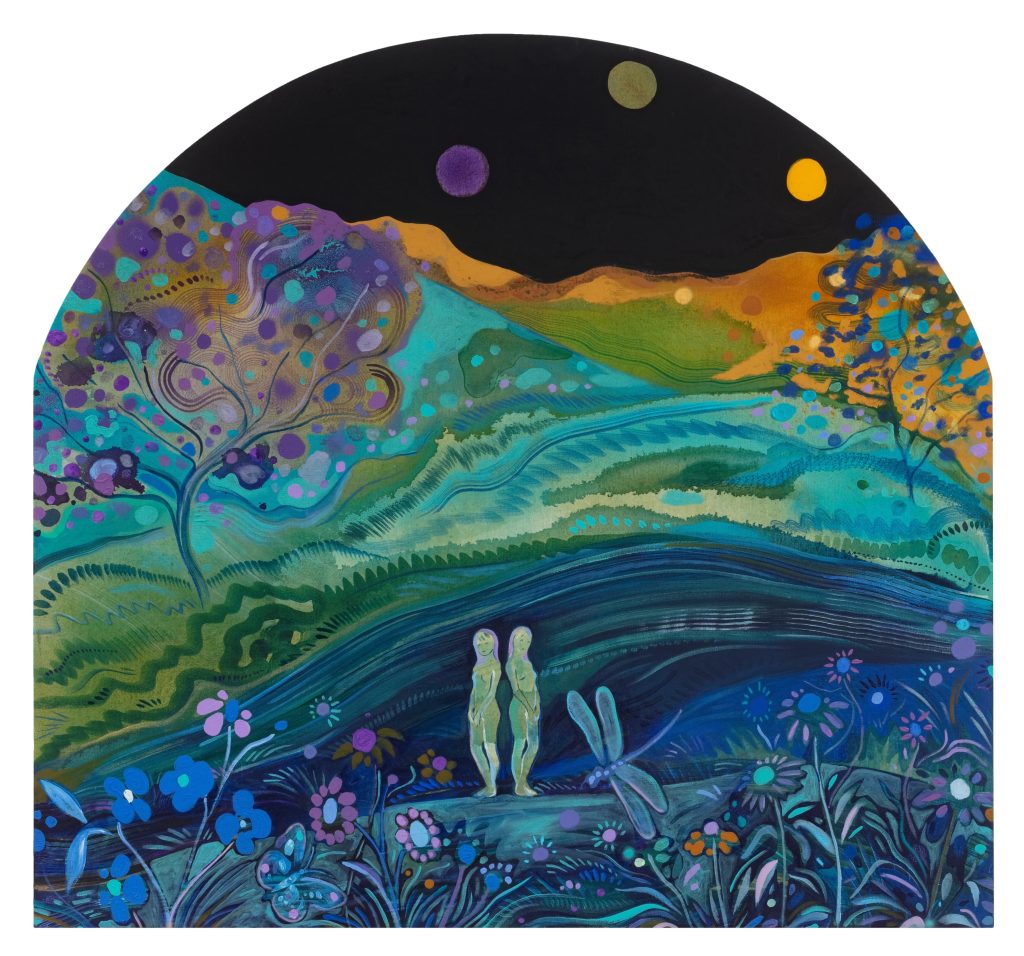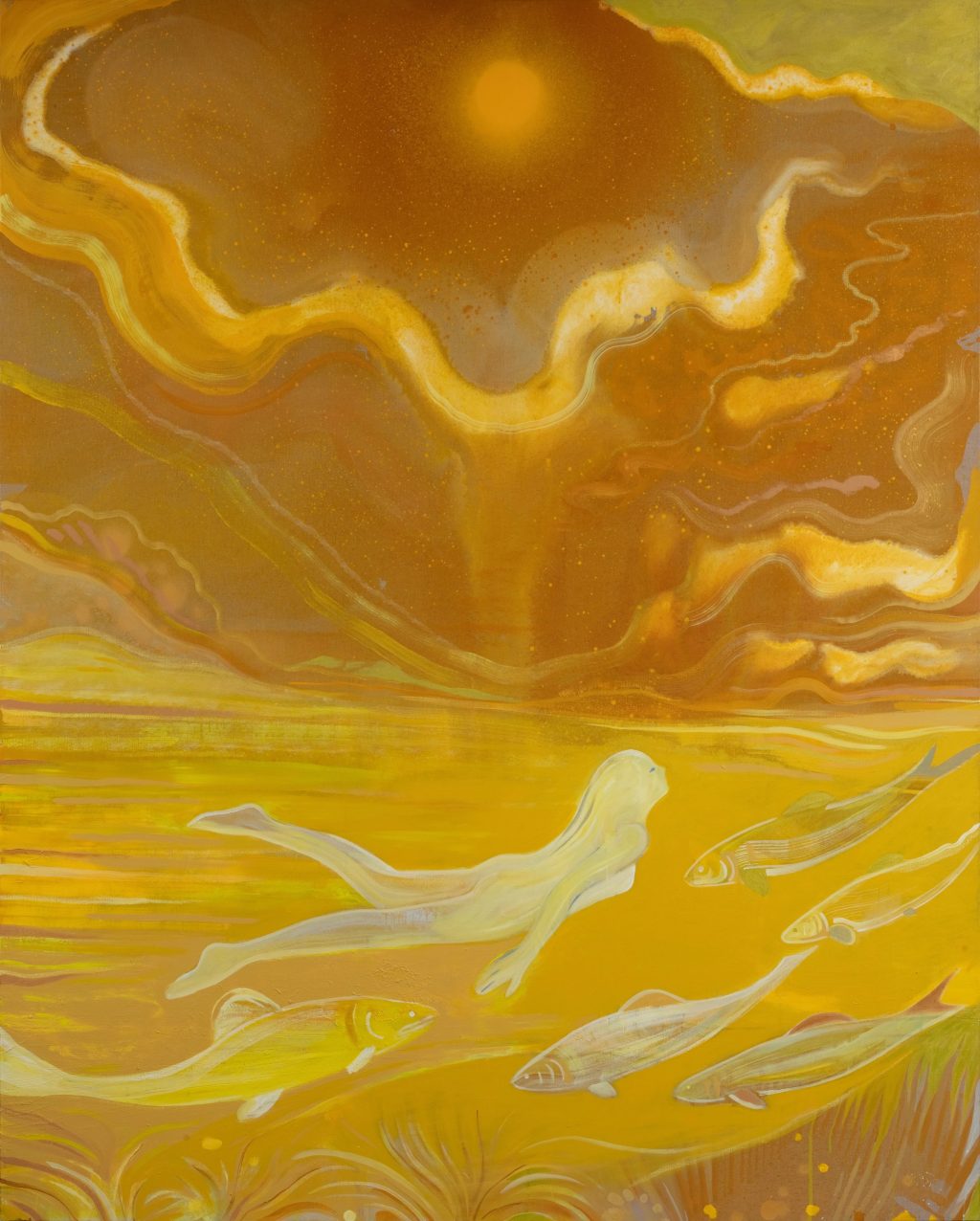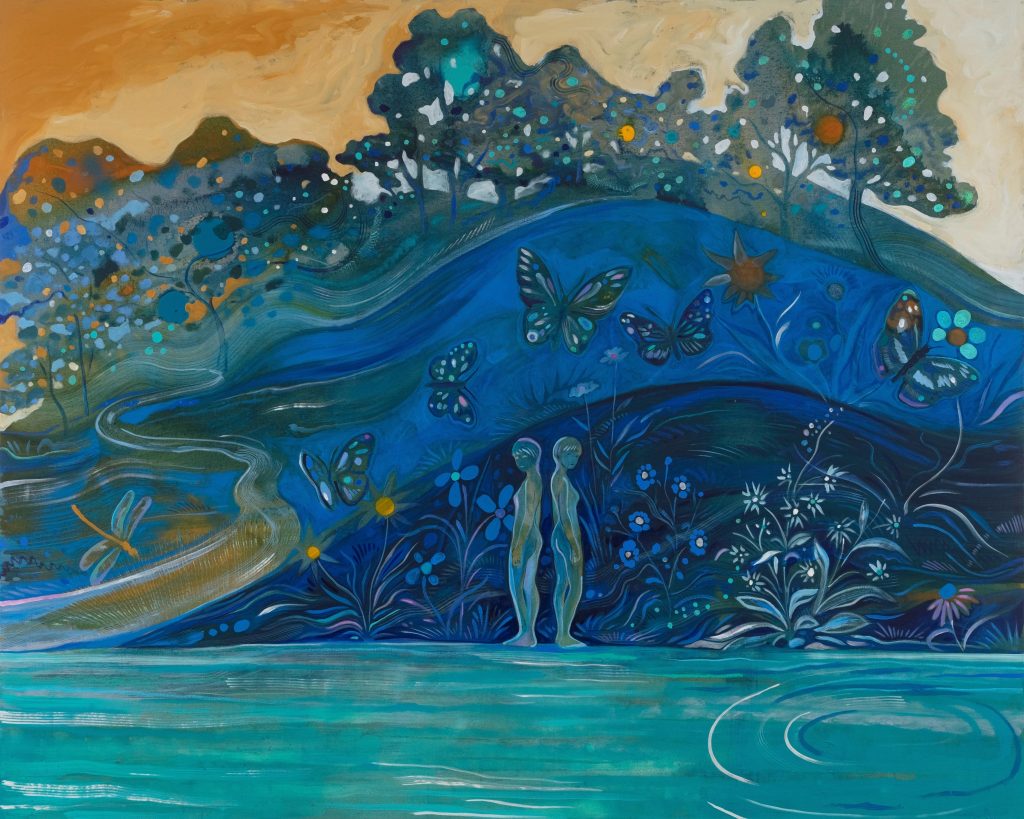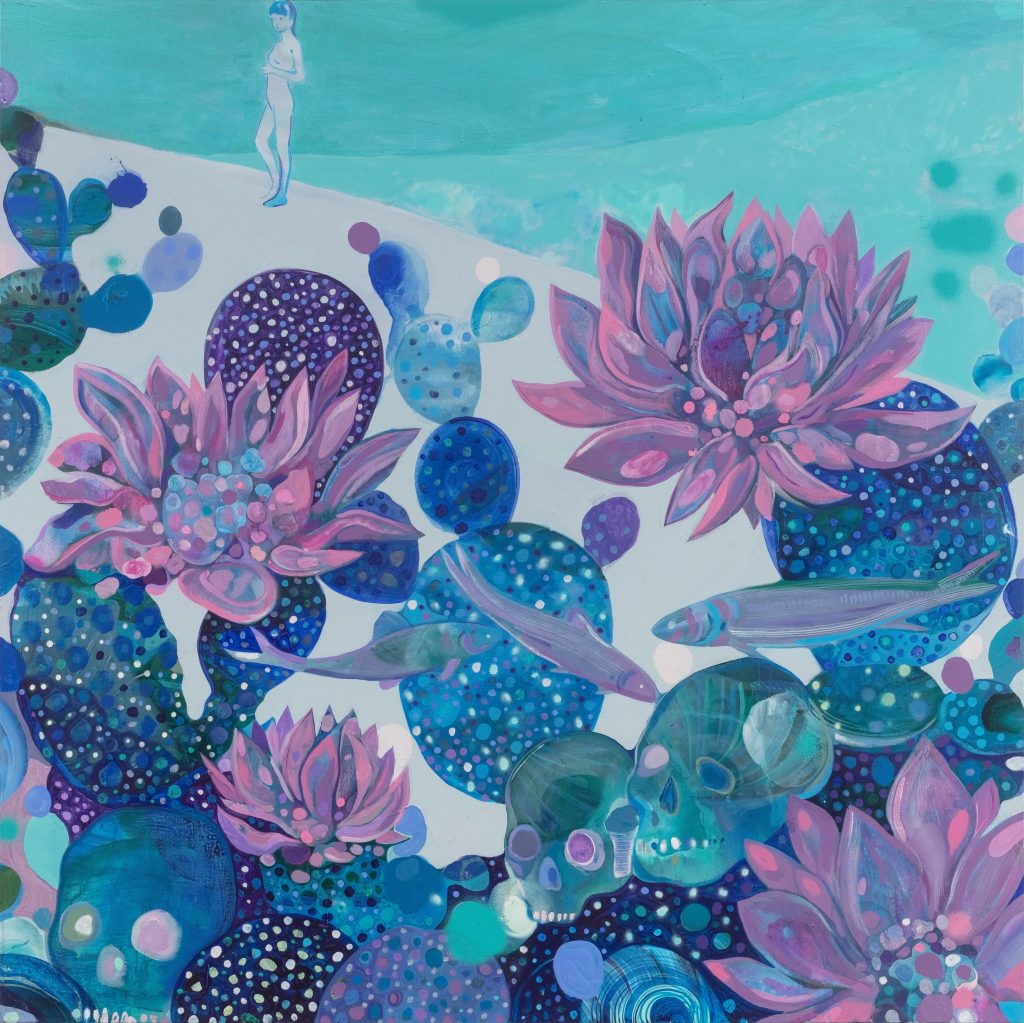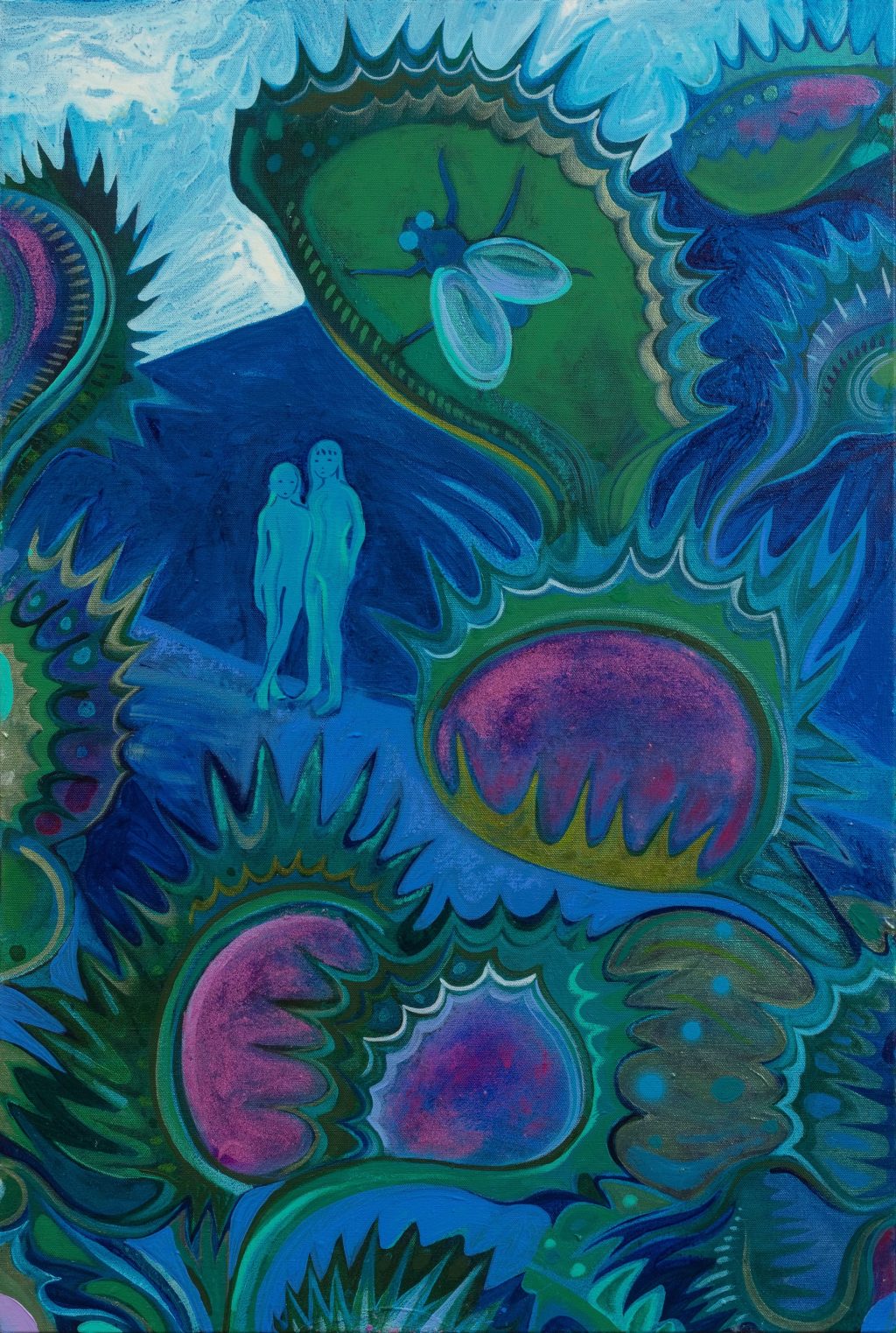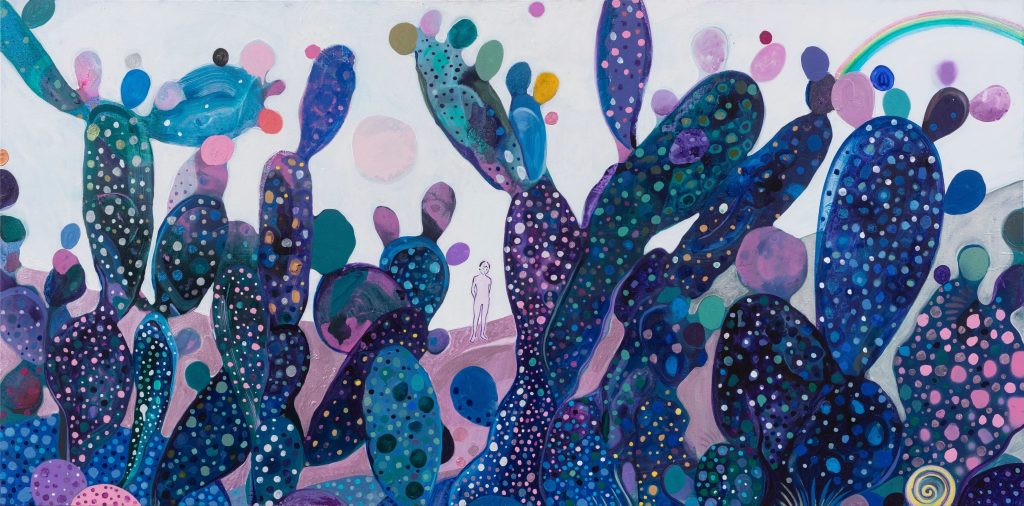TextualExhibition Text
HdM Gallery | Marcella Barceló: Nothing Gold Can Stay
Marcella works primarily in painting and drawing. Centred on the reimagination and dreaming of her childhood partly spent in Majorca, Spain and paired with an attentive understanding of natural landscape as a condition of constant flux and transition, the artist has developed a distinctive experiential approach in her early career that encompasses an embodied process.
As suggested by the artist, the title of the exhibition is drawn from the short poem “Nothing Gold Can Stay” written by Robert Frost in 1923. Embracing the gift of disillusionment, Marcella appropriates Frost’s depictions of rural life to ruminate the transience of youth, beauty, and ultimately life itself as a reverence for the oneness of her immediate surroundings. She further explores the ideation of a right relationship with nature where intergrowth is thought as a frame of her post-humanist mind.
Made over prolonged periods of sustained memory and observation, Marcella focuses on scenic elements ranging from (self-)portraiture of young girls, untamed animals, wild settings like giant volcanic peaks and ancient forests, and the outdoors that she enjoys, underwater diving, for instance. Returning to the same subject quite frequently, she composes her dream(-home-)land deliberately, which reflects a precise study of her personal history and nature as a genre of representation.
Particularly worth mentioning in this vein is the imagery of twinship especially sisterhood throughout Marcella’s practice. Identical figures or silhouettes of body shape as a sign of duality or even plurality contextualize the artist’s self-positioning to the symbiotic bond between man and nature, facilitating the gradual course of differentiation, separation, and integration, but not necessarily limited to a sort of linear evolution. She locates a non-anthropocentric place in her paintings, which has value independent of its benefit to people.
In this way, Marcella’s conception of nature is not only emotionally charged but also rooted in the Romancist tradition. She tends to metaphorize nature as mother, the all-powerful other who fosters her perception of the world, meanwhile having it poeticized and spiritualized as an aesthetic paradigm of harmony. There is a sense about her body of work in which the self-entity of nature has not yet arisen but has been arising, and the artist is a certain medium of caring. It is at once fantasy, reality, and utopia of a sustainable planet.
Date: 2024.2.28

